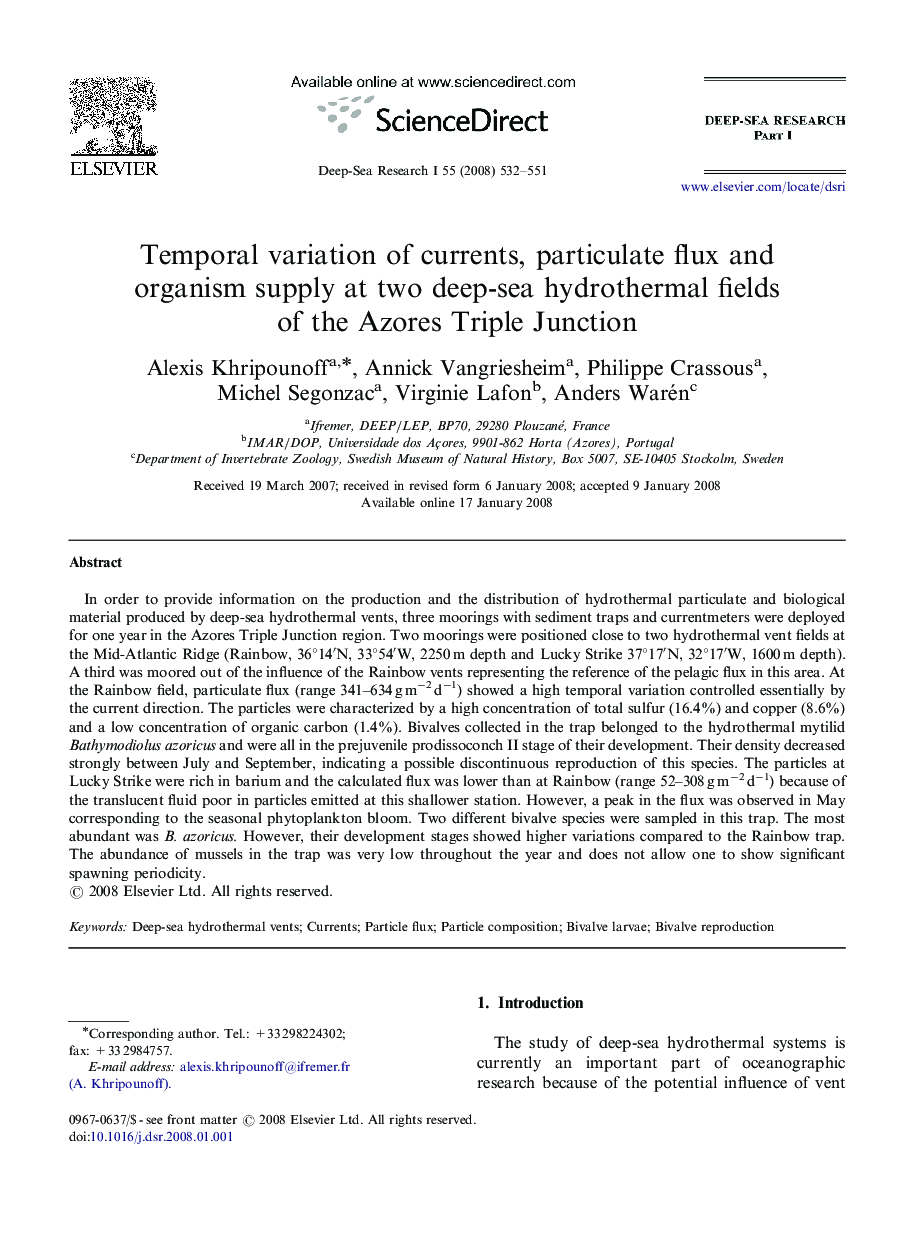| کد مقاله | کد نشریه | سال انتشار | مقاله انگلیسی | نسخه تمام متن |
|---|---|---|---|---|
| 4535498 | 1326112 | 2008 | 20 صفحه PDF | دانلود رایگان |

In order to provide information on the production and the distribution of hydrothermal particulate and biological material produced by deep-sea hydrothermal vents, three moorings with sediment traps and currentmeters were deployed for one year in the Azores Triple Junction region. Two moorings were positioned close to two hydrothermal vent fields at the Mid-Atlantic Ridge (Rainbow, 36°14′N, 33°54′W, 2250 m depth and Lucky Strike 37°17′N, 32°17′W, 1600 m depth). A third was moored out of the influence of the Rainbow vents representing the reference of the pelagic flux in this area. At the Rainbow field, particulate flux (range 341–634 g m−2 d−1) showed a high temporal variation controlled essentially by the current direction. The particles were characterized by a high concentration of total sulfur (16.4%) and copper (8.6%) and a low concentration of organic carbon (1.4%). Bivalves collected in the trap belonged to the hydrothermal mytilid Bathymodiolus azoricus and were all in the prejuvenile prodissoconch II stage of their development. Their density decreased strongly between July and September, indicating a possible discontinuous reproduction of this species. The particles at Lucky Strike were rich in barium and the calculated flux was lower than at Rainbow (range 52–308 g m−2 d−1) because of the translucent fluid poor in particles emitted at this shallower station. However, a peak in the flux was observed in May corresponding to the seasonal phytoplankton bloom. Two different bivalve species were sampled in this trap. The most abundant was B. azoricus. However, their development stages showed higher variations compared to the Rainbow trap. The abundance of mussels in the trap was very low throughout the year and does not allow one to show significant spawning periodicity.
Journal: Deep Sea Research Part I: Oceanographic Research Papers - Volume 55, Issue 4, April 2008, Pages 532–551